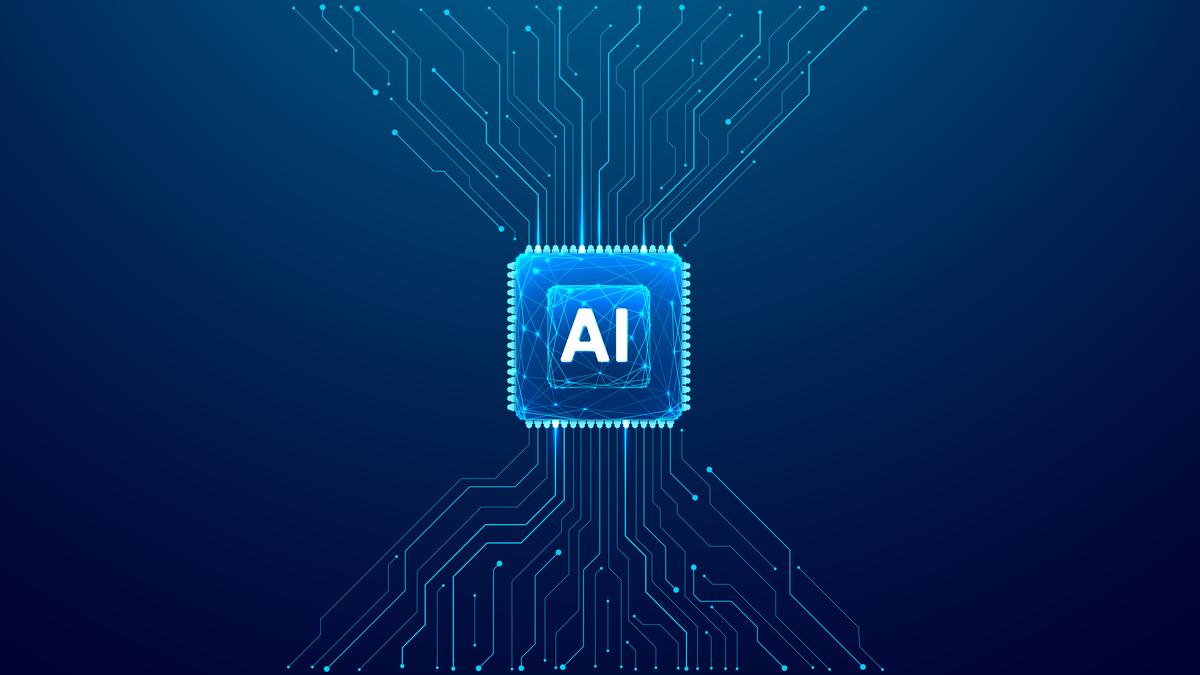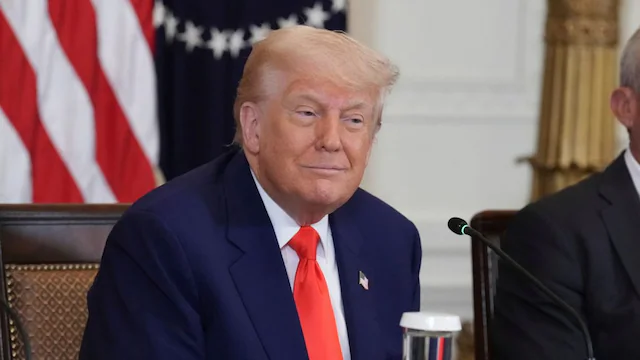- Courses
- GS Full Course 1 Year
- GS Full Course 2 Year
- GS Full Course 3 Year
- GS Full Course Till Selection
- Online Program
- GS Recorded Course
- NCERT (Recorded 500+ Hours)
- Polity Recorded Course
- Geography Recorded Course
- Economy Recorded Course
- AMAC Recorded Course
- Modern India, Post Independence & World History
- Environment Recoded Course
- Governance Recoded Course
- Science & Tech. Recoded Course
- International Relations and Internal Security Recorded Course
- Disaster Management Module Course
- Ethics Recoded Course
- Essay Recoded Course
- Current Affairs Recoded Course
- CSAT
- 5 LAYERED ARJUNA Mentorship
- Public Administration Optional
- ABOUT US
- OUR TOPPERS
- TEST SERIES
- FREE STUDY MATERIAL
- VIDEOS
- CONTACT US
Tariff Wars and A Reshaping Of Ai’s Global Landscape
Tariff Wars and A Reshaping Of Ai’s Global Landscape

Significance: GS II; IR;
Why in the News?
After the 2024 U.S. presidential election, the USA has imposed heavy tariffs on technological parts it imports from other countries, especially parts needed for building Artificial Intelligence (AI) systems.
- This is changing how and where the world’s AI technology is made and is affecting the worldwide AI race, especially between the U.S. and China.
- Countries like India are emerging as potential beneficiaries in this trade rivalry and are positioned as a “third option”.
|
Did you know? According to McKinsey's survey, AI could add trillions of dollars to the world economy. Companies using AI can become up to 25% more productive. In short, AI promises to make businesses work faster and smarter. |
How do the Tariffs affect AI supply chains?
- AI Hardware more Expensive: Tariffs are extra taxes the U.S. government puts on certain products it imports from other countries, like computer chips and electronics needed for AI.
- In 2025, these tariffs can be as high as 27% for some AI hardware, like racks, power supplies, cooling systems, and assembled modules.
- This means companies have to pay much more to get the same parts as before.
- It eventually makes building and running AI systems in the U.S. a lot pricier.
- The extra costs from tariffs often get passed on to customers, making AI-powered products and services more expensive.
- This could slow down the pace of innovation in the U.S.
- Shifting of the Investments: Because the resources are now more expensive to buy and build in the U.S., some companies (like Nvidia, Microsoft, and Amazon) are thinking about building their big data centers in other countries where costs are lower.
- They are usually considering places like China/Southeast Asia.
- This is a big shift, as companies traditionally preferred to keep their most important technology close to home.
- Smaller investors rely on imported hardware and have tighter budgets, they are who have hitted hard in this wave.
- Disrupted supply chains: Tariffs cause companies to rethink their entire supply chain (transportation for the path from factories to finished AI products).
- Many investors are now searching for new suppliers in countries which are not affected by U.S. tariffs, like India, Vietnam, or Mexico.
- This can be complicated and risky, as switching suppliers quickly can lead to delays, shortages, or quality issues.
|
Economic Theory vs. Reality:
Protectionist Approach:
|
What are the changing trends at Ground level in Real-time? (from Pyramid -to-Hourglass Model)
- Traditionally most of the companies used to have a Pyramid Model, a few leaders at the top, many managers in the middle, and lots of workers at the bottom.
- The middle layer (managers) handled coordination, supervision, and routine decision-making. (bigger chunk)
- But with advancements in AI in recent times, many tasks that middle managers did like tracking performance, coordinating teams, and analyzing data can now be done faster and cheaper by using AI chips.
- This reduces the need for a large middle management layer, making the organization slimmer in the middle like an Hourglass Model.(as shown in the figure).
- In the western countries like Europe and the USA, the hourglass model is taking hold fast.
- In fact the Gartner Report states that until 2026, one in five companies will use AI to slash over half their middle managers, saving costs while boosting output.
- Now the big players use AI to monitor workers or streamline onboarding, pushing for flatter, tech-savvy setups.
Is India adapting to AI and the Hourglass Model?
- India has its own way to adapt to emerging technologies. Although Indian cities like Bengaluru and Hyderabad are centers of AI innovation, rural areas lack good internet and tech infrastructure.
-
- Indian workplaces still prefer traditional, hierarchical management styles.
- India ranks low (72nd) on the IMF’s AI Preparedness Index - mainly due to Digital-divide.
- Indian companies still keep managers to handle complex and diverse market issues.
-
- For example, the big players like Flipkart and Reliance Jio use AI for things like predicting customer demand and improving deliveries, but keep managers to handle Market analysis.
- Indian companies are not fully adopting the “Hourglass Model” and is still using the ‘Hybrid Model’.
What are the present challenges in adopting the Hourglass Model in India?
- Employment Risks: AI can take over many routine or management jobs, especially the middle managers and less-skilled workers.
-
- Studies have predicted that up to 800 million jobs could change or disappear worldwide by 2030 because of AI.
- High resource investments: While most Indian companies say they want to train workers for new roles, actually doing this for millions of people is a huge challenging task and costly too.
- Ethical Concerns: If AI is trained on biased or incomplete data, it can make unfair decisions like denying loans or jobs to certain groups.
-
- Issue of privacy: Most Indians don’t like their personal data being sold or misused.
- New laws (like the Digital Personal Data Protection Act, 2023) are trying to protect people, but these rules are still new and not fully working yet with emerging technologies.
- Digital divide: About 65% of Indians live in rural areas, where internet and technology access is limited. This means many people can’t benefit from AI or even use it.
-
- Old vs. New Psychological Nexus: Indian businesses, especially family-run ones, often have strict hierarchies (lots of layers of bosses).
- Moving to a flatter, more tech-driven structure (like the hourglass model) can cause resistance from both workers and leaders who are used to the old ways.
|
Silver Lining for India:
|
What should be done? (Way Forward)
- Need to Decentralize AI: New tariffs have made it harder and more expensive to get general-purpose AI hardware from abroad.
-
- Because of this, companies are now making more custom AI chips (called ASICs) that are designed for specific tasks instead of one-size-fits-all hardware.
- It is said that by 2028, more than half of AI hardware could be these specialized chips.
- Hence, instead of relying on a few big, central systems, AI development should be decentralized right from the start.
- Need for Reskilling: Need to skill the rural and urban unskilled workers on basic AI, data, and problem-solving skills. Use programs like Skill India to help everyone get started.
- Need a Hybrid Model: Considering the diversity of the country, a hybrid model needs to be adopted. For example, AI can be used for analytics or customer chats but need to keep humans for the decision making purpose.
- Need for Ethical Comprehensive framework: Make strong, fair rules to guide how AI is used, so it’s open, honest, and doesn’t show bias. This builds trust.
-
- Can collaborate to work with Western companies to learn best practices, but adapt their ideas to fit India—especially to make affordable tech for small businesses.
|
PYQ Relevance: Q. What are the key areas of reform if the WTO has to survive in the present context of ‘Trade War’, especially keeping in mind the interest of India? (UPSC CSE 2018) |




